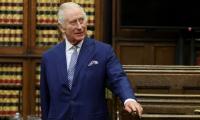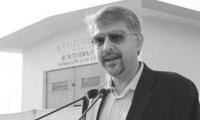Pakistan’s latest National Security Policy has declared the economy an integral and vital pillar of national security. It was decided the economy, economic growth and development would be dealt with as a prime area of national security. The state of Pakistan promised it would strive to achieve the goals of sustainable growth, inclusive development and financial solvency to build a prosperous society.
Pakistan has identified traditional tools like trade, connectivity and investment for attaining rapid and sustainable growth. Pakistan will be cultivating talent through better human capital production to go for high-quality, innovation-driven, and harmonious development. Moreover, Pakistan will also be tackling the issues of economic disparities among the citizens and regions.
It is a good move, rather need of the time in the context of globalisation and economic connectivity. Globalisation has turned the world into a highly competitive place, and every country has to compete for market share. It is becoming extremely difficult to find a sustainable place in the global market.
In a globalised world, the economy is considered to be the prime indicator for determining the global status and power of any country. We have seen countries with better economic status playing a leading role in steering the global agenda, and the world tries to avoid discussing their injustice or cruelty. For example, everyone knows India is violating human rights and has illegally occupied Kashmir, but the world is turning a blind eye to it. Countries across the world have started to treat economic security as a prime area of work. Pakistan has followed suit through national security policy.
However, the success or failure of economic security would depend on how we define and implement it. Thus, before defining economic security and devising the implementation plan, Pakistan should analyse three prominent models of economic security: the United States (US), the Union of Soviet Socialist Republics (USSR) and the People’s Republic of China to formulate its own economic security policy. These models have been selected because these countries are major powers of the world and have defined economic security through different lenses.
Let’s start with the US economic security framework. The analysis indicates the US defined economic security through the lens of military security. It led to the creation of military-industrial complex (MIC). President Eisenhower identified this trend way back in the 1960s. He warned the nation about the emergence of the military-industrial complex and the consequences of this approach.
Unfortunately, no one heeded President Eisenhower’s wise warning. The military-industrial complex started to strengthen its position and got stronger with the passage of time. The weapon and security industries flourished by leaps and bounds. They have also weaponised the society of the US just to earn more money. The military-industrial complex has promoted privatisation, not only in the US but also at the global level. It has greatly impacted the ability of the State to sustain pressure from the private sector, which was the ultimate objective of MIC.
It had impacted the US on two fronts. It gave birth to inequality and poverty. The statistics show 37.9 million people, almost 11.6 percent of the national population, were living below the poverty line in 2023. It is expected the number increased during 2023. The same is true for inequality. All surveys and statistics show inequality is higher in the US than in any other developed country. The higher poverty and inequality are breeding insecurity among US citizens.
On top of that, weaponisation of US society is further aggravating the situation. Incidents of mass shootings of civilians are on the rise in the US. The US government is unable to control gun violence due to interference of the weapon industry, and is supported by the military-industrial complex.
Second, it weakened the fighting capabilities of the US forces. The military-industrial complex had promoted a culture of business and profit-seeking instead of sharpening their fighting skills. That’s why the US could not win many wars and face security challenges. For example, the MCI was so busy with other activities it could not foresee the threat of terrorist attacks and 9/11 happened. Moreover, there are many people who believe the MCI has caused many conflicts across the world. It provides them the opportunity to mint more money by selling weapons, fear, and capture resources. The most recent examples on this front are the Ukraine-Russia, Iraq and Libyan conflicts. The military-industrial complex- based economic security concept turned the US into a more unequal and insecure country. It also caused many problems and conflicts at the global level.
In the case of USSR, the concept of economic security was perceived in a different way. The military started to dominate the decision-making, which ultimately led to militarisation of the economy. They started to analyse every decision with the angle of military security. It downgraded the importance of economic growth and development. The USSR became busy with military expeditions and conflicts instead of focusing on people and their needs. As a result, poverty started to rise and people were left with no tangible future plans. Ultimately, it contributed to the fall of the Union of Soviet Socialist Republics.
Contrary to both models discussed above, China defined economic security in an entirely different way, placing it at the centre. It is quite clear from China’s reforms. Since 1978, China focused on economic growth and sustainable development to meet the expectations of the people. In 1985, China created a special leading group under the leadership of Communist Party of China to address the issues of poverty and the development needs of people. China believes without development of people, the country will not be secure. To achieve the goals of people-centric growth and development, China assigned the major role to State-Owned Enterprises (SOEs). The SOEs delivered on the given tasks.
On the other hand, China confined military and security agencies to assigned tasks and did not allow military to expand its influence in national decision-making and business ventures. China is convinced if the soldiers’ hearts were in business, they would not focus on security. They will be focused on economic gains and profits. With the continuous efforts by CPC leadership and the people-centric approach, China is the only country in the world that is poverty-free.
Now, China, under the leadership of President Xi, is on a modernisation drive. Innovation-driven modernisation is turning China into a new hub of technology. It has started to deliver results like C919, space advancements, new energy sources, new energy vehicles and technological revolution.
However, China is modernising by sticking to the Chinese style. President Xi devised the philosophy and vision of modernisation by adhering to the principles of Socialism with Chinese Characteristics. It means, again, people are at the central point for all decision-making and implementation. President Xi is also promoting the “common prosperity” philosophy to curtail inequality and enhance equality in China.
In a nutshell, the people-centric approach helped China to move on the ladder of development and strengthen its global image. It has turned China into the second-largest economy in the world and a global power.
The above-discussed models provide a few lessons that can help Pakistan adopt the right policies and actions. The lessons can help Pakistan in three ways. First, it will help understand the concept of economic security and its relationship with people. Second, it will help determine the role of institutes and assign them relevant tasks. Third, Pakistan can avoid the mistakes committed by other countries.
Lastly, Pakistan must comprehend the definition and implementation plan of economic security will determine whether the country is on track for economic development or something else. It is suggested Pakistan must define the concept of economic security by keeping the people at the centre. The implementation plans and actions must revolve around the goal of how people will benefit.
Parents informed the police about the kidnapping of their son and subsequent demands of ransom money by the kidnappers
Rains, which started in plain areas late Saturday night, continued throughout the day
Police claimed to have arrested four accused, including Akram, Zaka Abid, Khalid and Amjad
Diplomatic sources say that the two countries have appointed liaison officers for counter-terrorism on the...
World Bank reports that the government of Pakistan is no longer able to undertake social welfare projects







